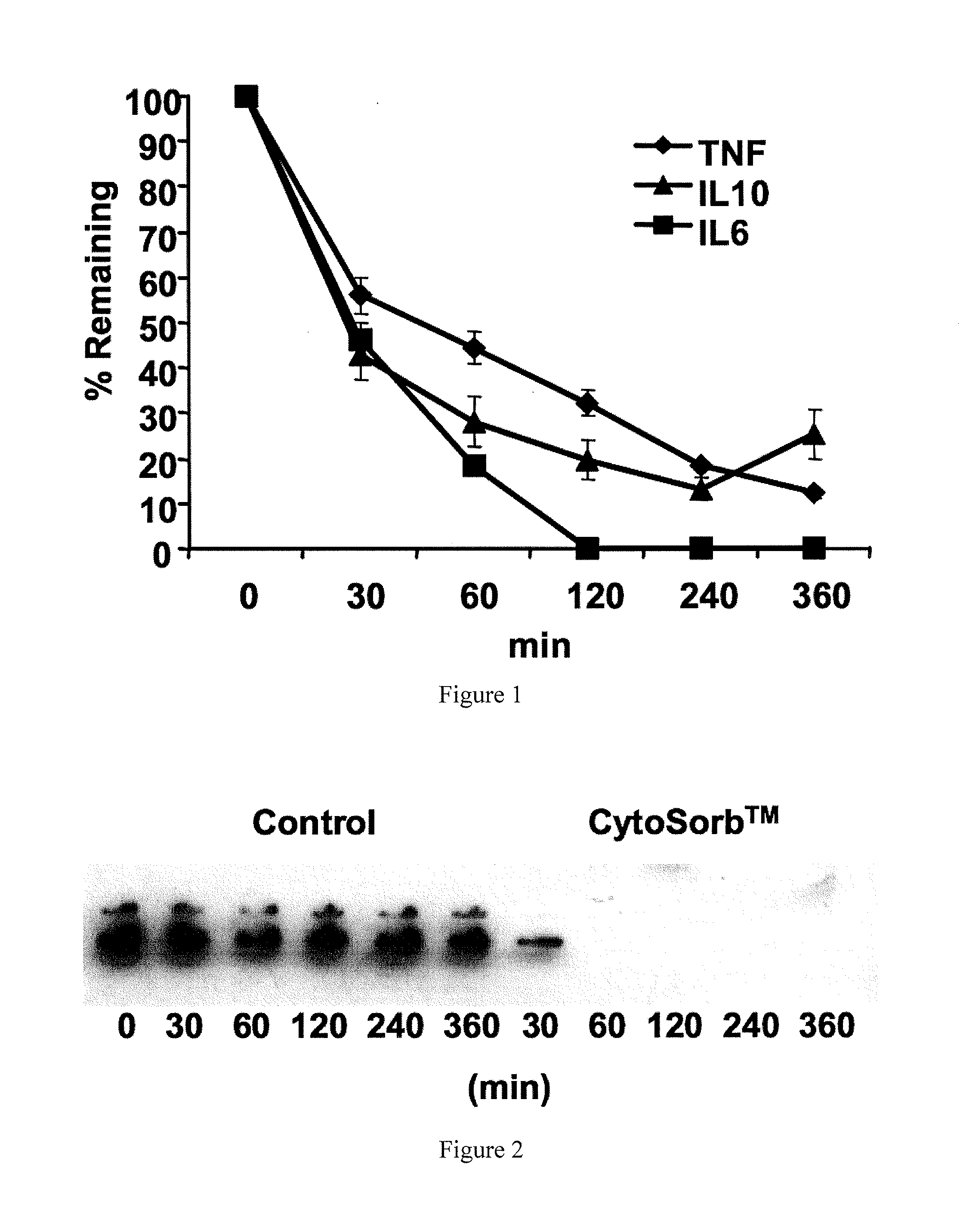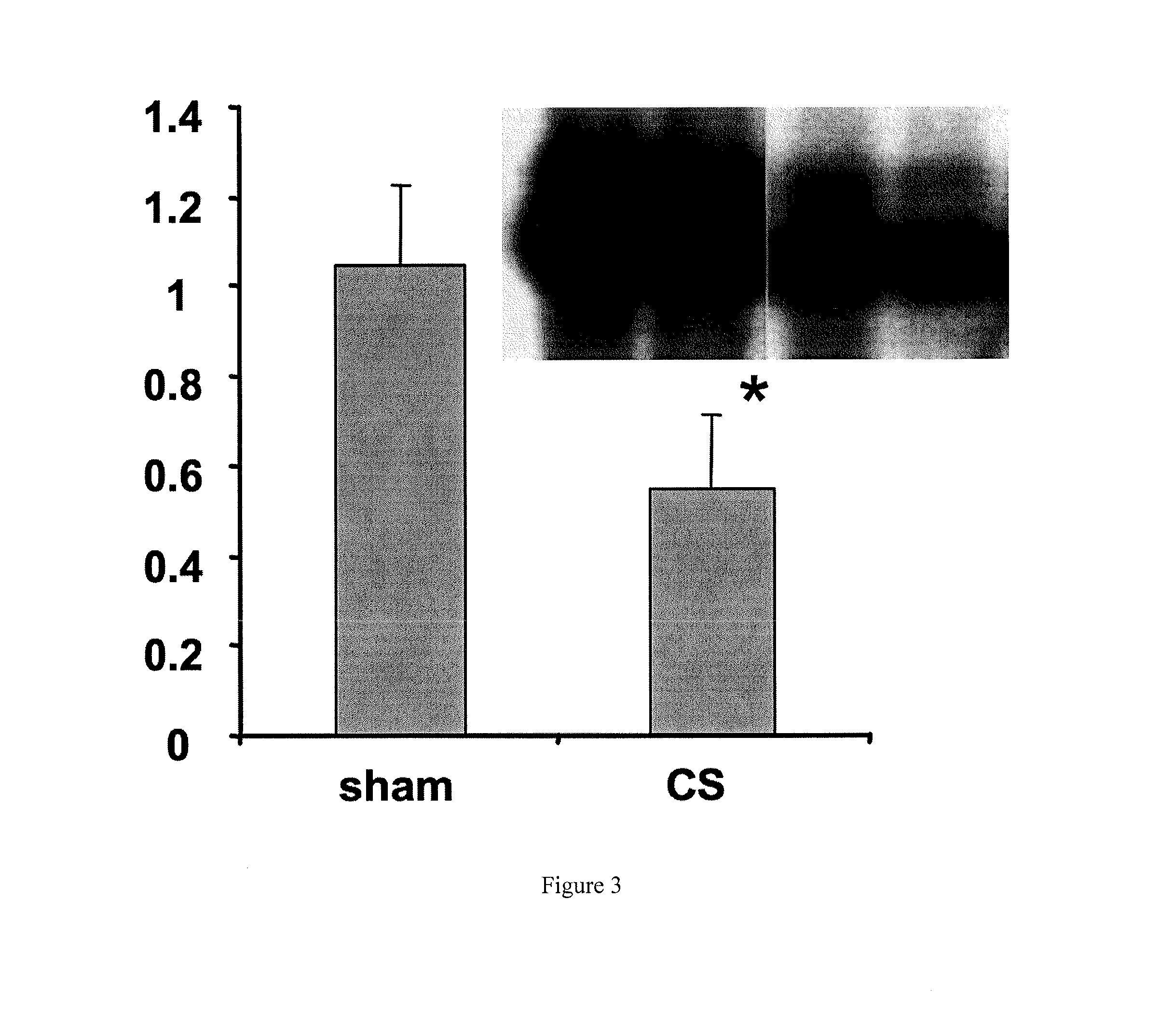Enteral administration of sorbent polymer for treatment and prophylaxis of inflammation
a sorbent polymer and sorbent polymer technology, applied in the field of systemic inflammation treatment, can solve the problems of generalized inflammation, multiple organ failure, further tissue injury, etc., and achieve the effect of improving survival
- Summary
- Abstract
- Description
- Claims
- Application Information
AI Technical Summary
Benefits of technology
Problems solved by technology
Method used
Image
Examples
example 1
Treatment with CYTOSORB Beads and NF-kB DNA-Binding
[0031]In one set of experiments, 12 animals were studied after intravenous lipopolysaccharide (LPS) injection, six sham and six treated with CYTOSORB using a 10-g device and an aterial-venous circuit. All animals were euthanized after four hours of perfusion so that liver tissue could be obtained for determination of NF-kB DNA-binding. The results, shown in FIG. 3, indicate that NF-kB DNA-binding was significantly lower for CYTOSORB-treated animals as compared to sham-treated animals (p=0.03).
example 2
Treatment with CYTOSORB Beads and Short-Term Survival
[0032]In a separate set of experiments, randomized 40 animals were randomized to receive either hemoadsorption or treatment using a sham circuit for four hours beginning immediately following a lethal LPS infusion. Following the termination of perfusion at four hours, the animals received only fluid resuscitation for the next 8 hours. All animals were sacrificed at 12 hours. Animals treated with CYTOSORB demonstrated a 21% increase in survival time (p>0.01). In the sham-perfusion group, 19 of 20 animals died before 12 hours, while 7 of 20 rats that received hemoperfusion with CYTOSORB were alive at 12 hours, representing an overall improvement in survival (form 5% to 35%, p=0.02). Circulating plasma IL-6, TNF and IL-10 levels for animals treated with CYTOSORB were also significantly lower and their concentrations were inversely correlated with survival time p=0.003.
example 3
Enteral CYTOSORB Improves Survival in Septic Rats
[0033]Preliminary experiments were conducted in 22 rats using an established lethal model of sepsis, cecal ligation and puncture (CLP). Survival was measured with and without enteral CYTOSORB therapy. The results are shown in FIG. 4. Compared to controls, CYTOSORB-treated animals had significantly improved survival (36% vs. 9%), p=0.03. It is important to emphasize that this significant improvement in survival was obtained using only enteral administration of the CYTOSORB beads. Presumably, the presence of these beads within the lumen of gastrointestinal tract acted as a sink for deleterious mediators released into the gut via the bile and / or secreted by immunostimulated enterocytes.
PUM
| Property | Measurement | Unit |
|---|---|---|
| bead diameter | aaaaa | aaaaa |
| diameter | aaaaa | aaaaa |
| diameter | aaaaa | aaaaa |
Abstract
Description
Claims
Application Information
 Login to View More
Login to View More - R&D
- Intellectual Property
- Life Sciences
- Materials
- Tech Scout
- Unparalleled Data Quality
- Higher Quality Content
- 60% Fewer Hallucinations
Browse by: Latest US Patents, China's latest patents, Technical Efficacy Thesaurus, Application Domain, Technology Topic, Popular Technical Reports.
© 2025 PatSnap. All rights reserved.Legal|Privacy policy|Modern Slavery Act Transparency Statement|Sitemap|About US| Contact US: help@patsnap.com



